Passages
26th January - 23rd March 2019
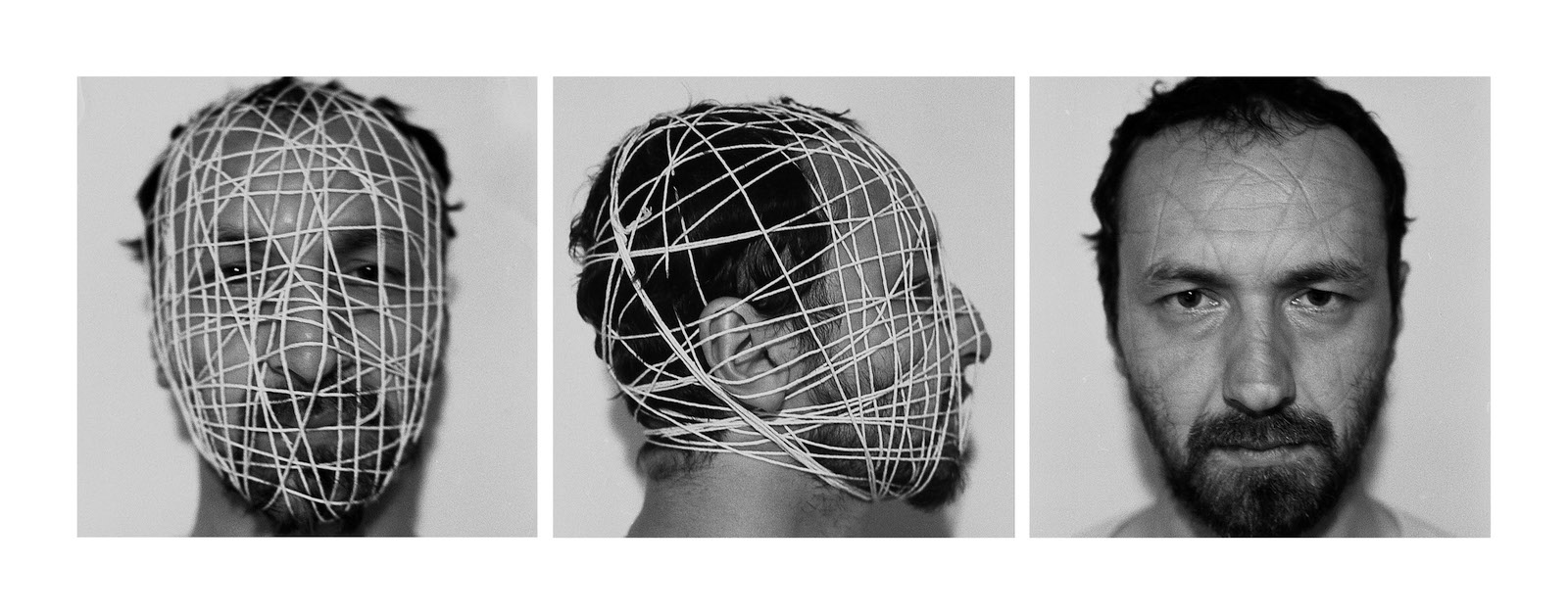
Black and white gelatin silver prints - Triptych
Image: 30 x 30 cm (each)
Frame: 42 x 104 x 3 cm
The "Masks" series is marked by a strong political dimension, staging symbolically the constraints generated against Romanian intellectuals in times of dictatorship, especially artists.
Mask # 2 suggests a reflection about the final image, here by the marks left on the skin after the removal of a tightly wrapped string. This political work, though without being a program of dissidence, evokes the muzzling, the oppression undergone during a period of censorship and extreme surveillance.

Image: 65 x 162 cm
Frame: 69 x 166,5 x 3 cm
With Signs (body work), Decebal Scriba reinvests the language of postures already undertaken in other series. Here, it acquires a ritual dimension, while echoing the socio-cultural context of Romania in the 1970s. The gestures, in a sort of reinvented sign language, refer to attitudes adopted during the Romanian communist regime: passivity, consolation, acceptance... Accordingly, the column hides the body to focus attention on the hands, vehicles of emotion and silent speech when expression was constrained.
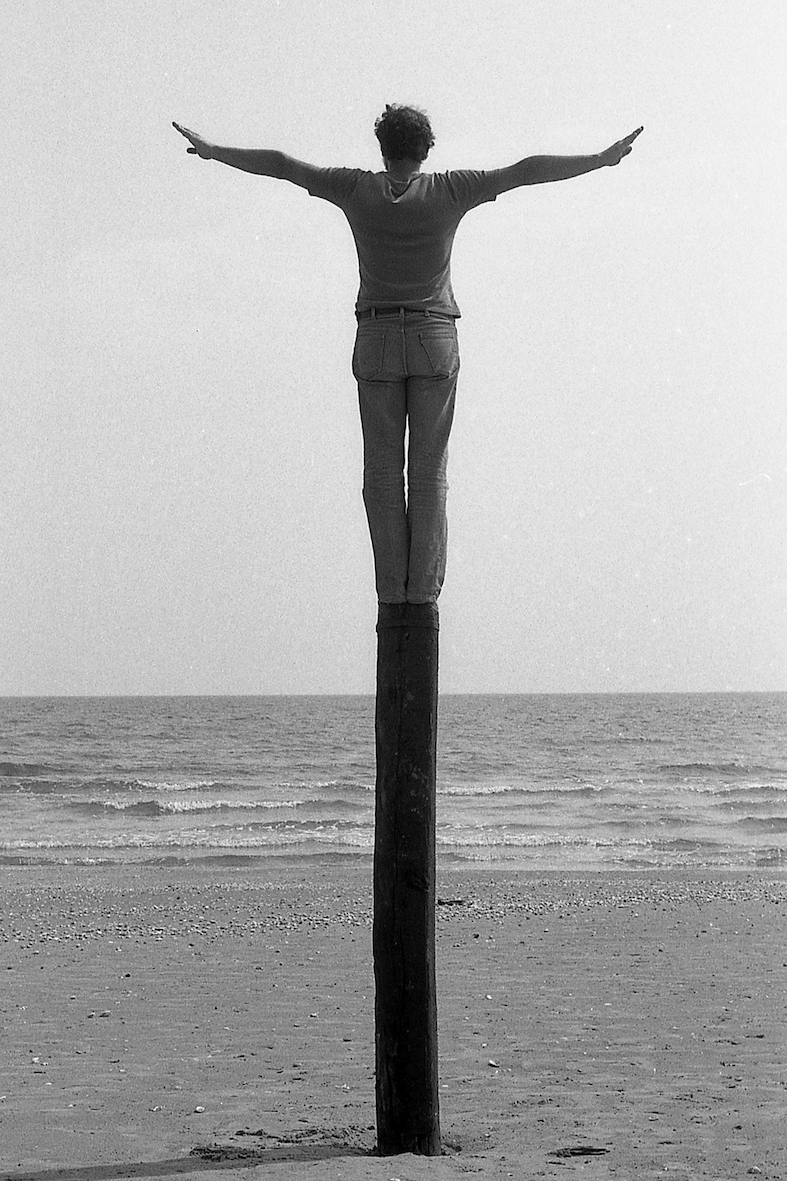
Black and white gelatin silver print
Image: 17,7 x 11, 8 inch
Body Sign # 1 belongs to a series of photographs from a performance featuring different static positions. It is part of a reflection on body postures, also visible in The Gift or Body Sign #2 and reflects the actionism of the 80s. Currently named performances, this type of artistic interventions were then called "actions", term with an undeniable stronger political connotation.

vintage black and white gelatin sliver print
Image: 18,5 x 25 cm
Frame: 32,3 x 26,4 x 2,5 cm
The Labyrinth photographs, from the Mirror series, capture an intervention on the seaside, and act as a philosophical reflection around the concept of reality. Like a labyrinth, this notion of reality can take a multitude of paths; there is a global picture of reality in accordance with a supposedly established definition, becoming nevertheless more and more complex and elusive as soon as our common conventions are reconsidered, calling into question its very existence.
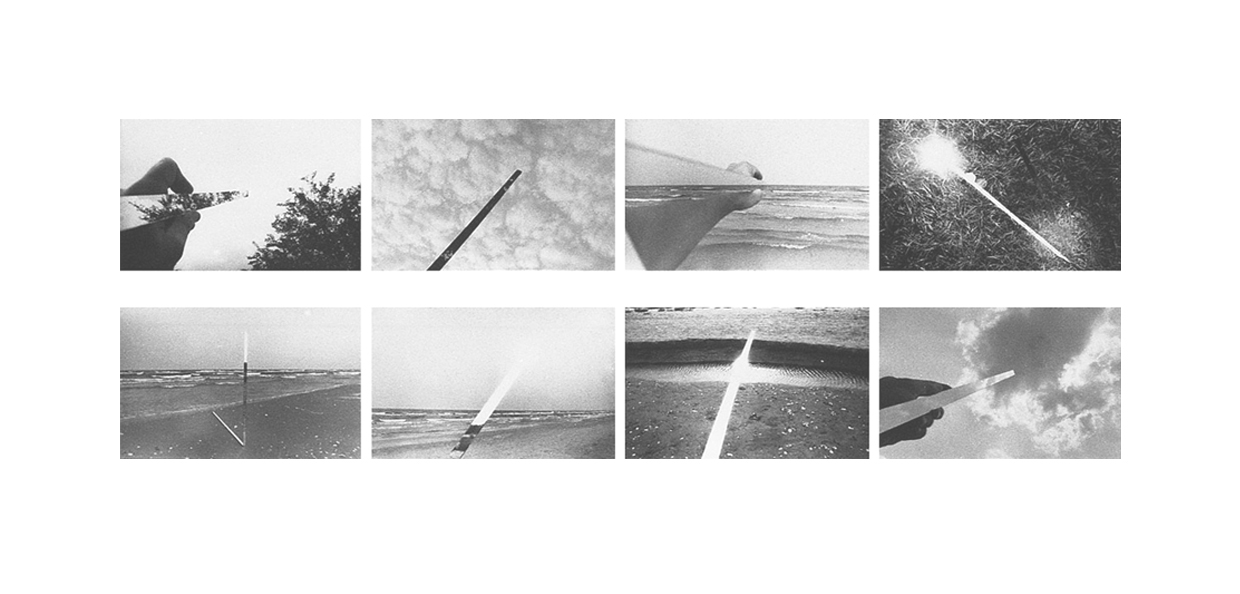
8 vintage black and white gelatin silver prints
Image: 4,2 x 6,5 inch each
Frame: 42 x 82 x 3 cm
The Labyrinth photographs, from the Mirror series, capture an intervention on the seaside, and act as a philosophical reflection around the concept of reality. Like a labyrinth, this notion of reality can take a multitude of paths; there is a global picture of reality in accordance with a supposedly established definition, becoming nevertheless more and more complex and elusive as soon as our common conventions are reconsidered, calling into question its very existence.

Image: 30 x 20 cm chaque
The Gift is a performance executed in 1973 and 1974 in the streets of Bucharest in which the artist, while evolving in the city holding an imaginary object, attempts to enter into communication with a potential audience. It is part of a reflection already initiated where the symbolism of the posture is explored, becoming ritual, essential or universal. Due to an oppressive policy and a climate of constant denunciations, the expected contact is missed and the experience punctuated by suspicious looks. It is immortalized by photographs, of which this last version of presentation enables to restore the atmosphere of this period, acting by this documentary dimension like a real testimony of the time.
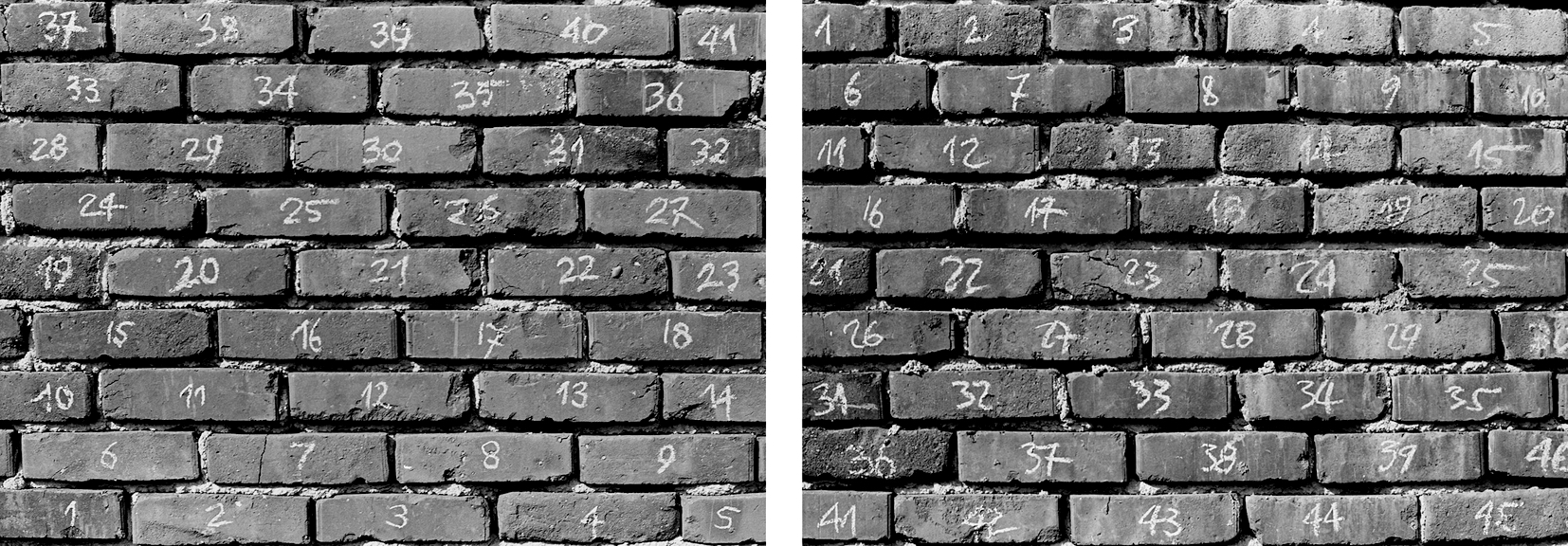
Image: 30 x 45 cm (each)
The Wall, by figuring numbers on a wall in a ascending and descending order, evokes both construction and deconstruction. The work embodies the idea that no wall can withstand the impact of time or human intervention, while referring to a period of demolition in favor of the architectural and political construction of the Romanian totalitarian regime.

Image: 30 x 90 cm
Frame: 42 x 103,4 x 3,5 cm
Untitled (Void study) is the photographic capture of a rectangular breakthrough in grass. The image, which become obsessional for the artist, found its meaning when it was turned to a negative. It then evolves into a questioning around the notion of emptiness and fullness, existance and nonexistent, life and death. Through the investment of the philosophical field, the artist invites us to interrogate our definitions in order to highlight their complexity.
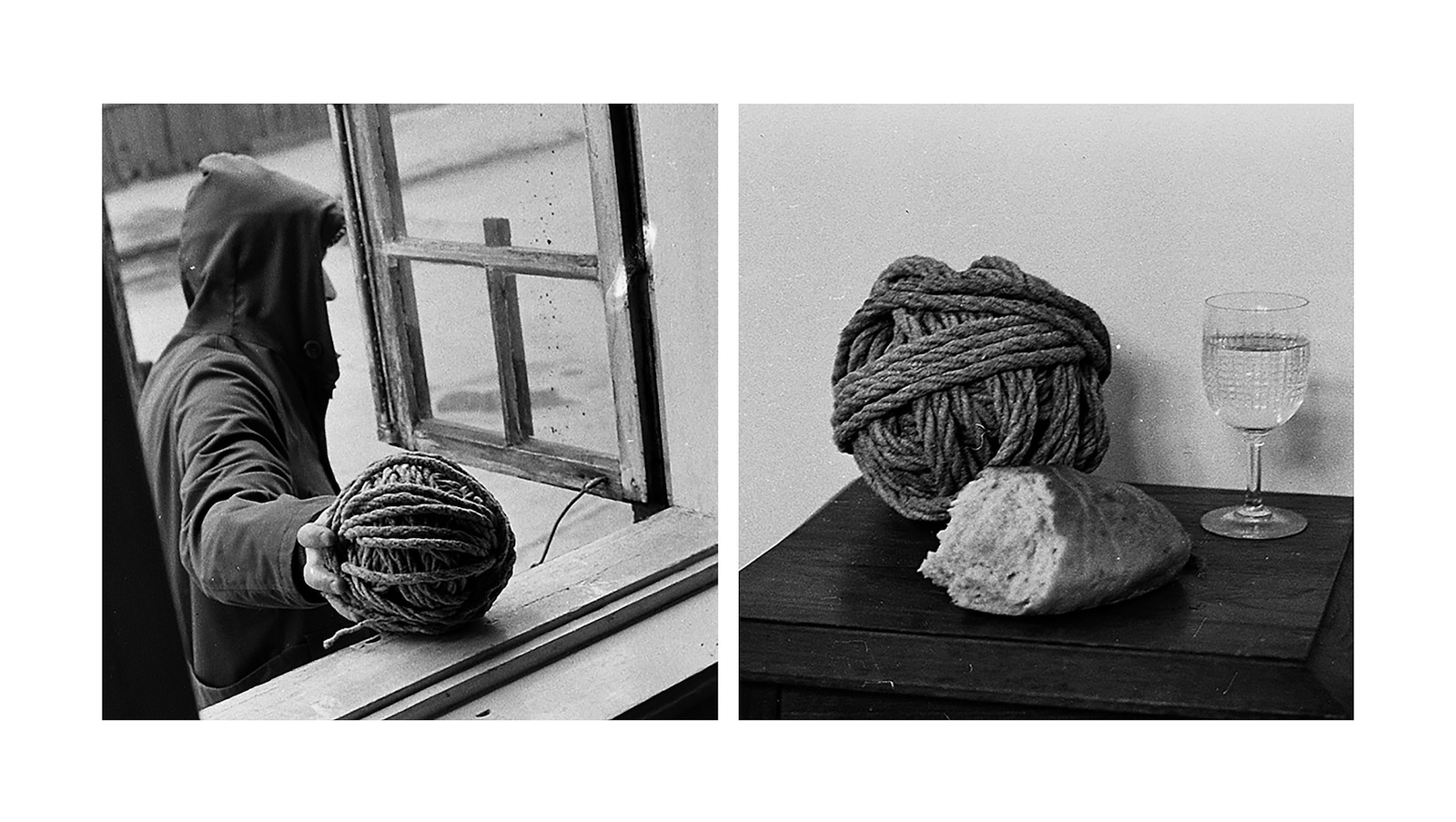
Image: 30 x 30 cm (each)
The clew is a recurrent pattern in Decebal Scriba's work. It takes on a strong symbolic and philosophical dimension, the rope referring to the idea of an initiatory journey, or even the course of existence. Composed of entanglements of yarn sometimes ordered, sometimes chaotic, it introduces a reflection on existential dilemmas.
This symbol is also used in drawings during state exhibitions and, under the guise of sobriety and innocence, allows the artist to escape the risk of censorship.
Exhibitions:
- Passages, Galerie Anne-Sarah Bénichou, Paris, France, 2019
- Memory Clouds, curated by Ami Barak, Galerie Anca Poterasu, Bucharest, Romania, 2018
- Decebal Scriba & Serge Spitzer, 40 years after, Contemporary Art biennial Art Encounters, curated by Ami Barak, Timisoara, Romania, 2017
Bibliography:
- Decebal Scriba, 70s - 80s Works, under the supervision of Olivia Nitis, Verlag Kettler éditions, 2017, p.76 and p.101

24,5 x 34 cm
Signed and dated lower right
The clew is a recurrent pattern in Decebal Scriba's work. It takes on a strong symbolic and philosophical dimension, the rope referring to the idea of an initiatory journey, or even the course of existence. Composed of entanglements of yarn sometimes ordered, sometimes chaotic, it introduces a reflection on existential dilemmas.
This symbol is also used in drawings during state exhibitions and, under the guise of sobriety and innocence, allows the artist to escape the risk of censorship.
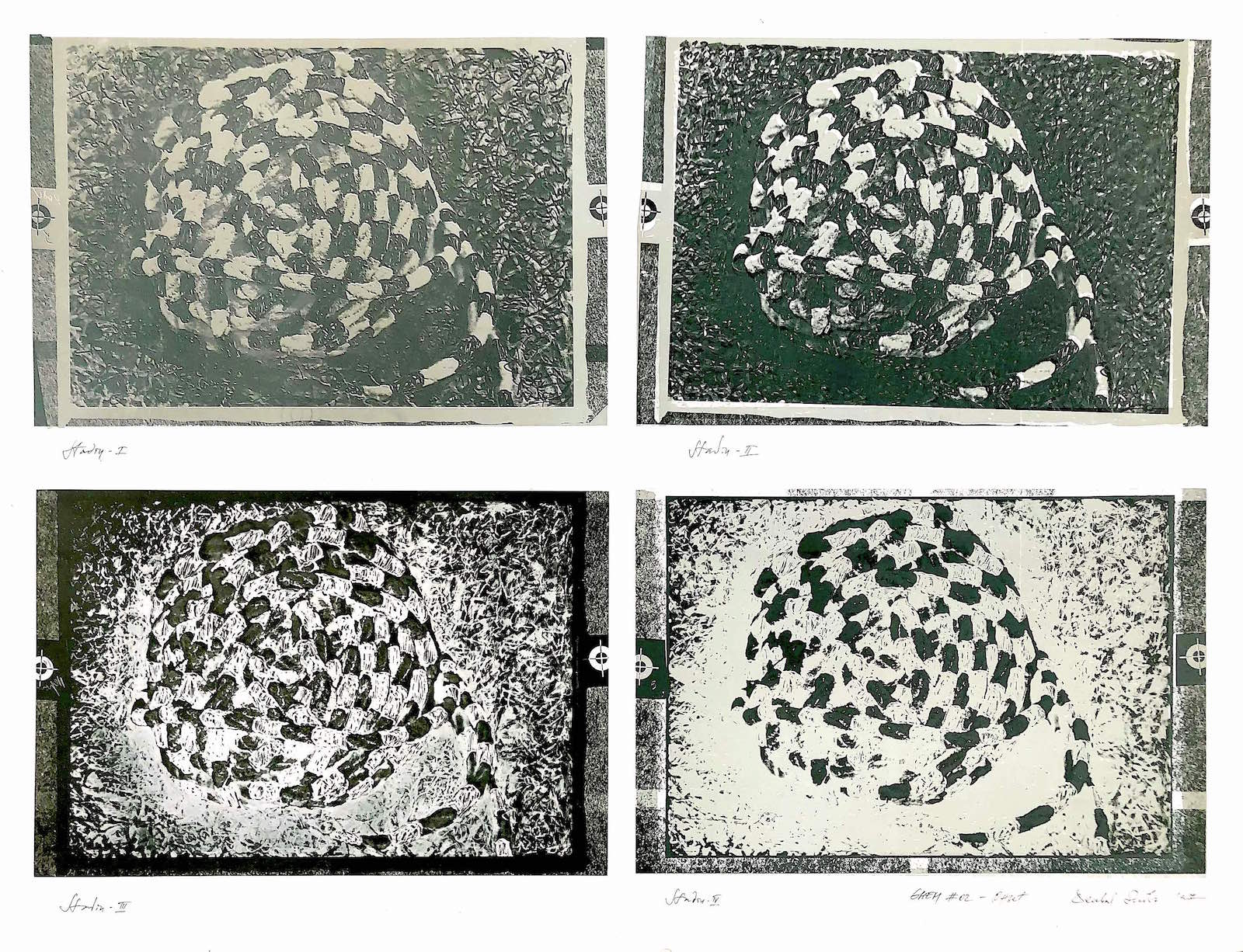
The clew is a recurrent pattern in Decebal Scriba's work. It takes on a strong symbolic and philosophical dimension, the rope referring to the idea of an initiatory journey, or even the course of existence. Composed of entanglements of yarn sometimes ordered, sometimes chaotic, it introduces a reflection on existential dilemmas.
This symbol is also used in drawings during state exhibitions and, under the guise of sobriety and innocence, allows the artist to escape the risk of censorship.

Image: 17,5 x 17,5 cm
Frame: 27 x 27 x 2,7 cm (encadré)
The clew is a recurrent pattern in Decebal Scriba's work. It takes on a strong symbolic and philosophical dimension, the rope referring to the idea of an initiatory journey, or even the course of existence. Composed of entanglements of yarn sometimes ordered, sometimes chaotic, it introduces a reflection on existential dilemmas.
This symbol is also used in drawings during state exhibitions and, under the guise of sobriety and innocence, allows the artist to escape the risk of censorship.
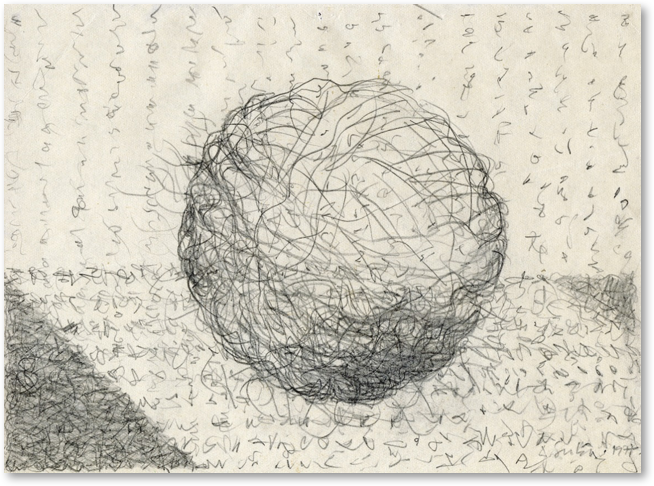
6 x 7,6 inch
The clew is a recurrent pattern in Decebal Scriba's work. It takes on a strong symbolic and philosophical dimension, the rope referring to the idea of an initiatory journey, or even the course of existence. Composed of entanglements of yarn sometimes ordered, sometimes chaotic, it introduces a reflection on existential dilemmas.
This symbol is also used in drawings during state exhibitions and, under the guise of sobriety and innocence, allows the artist to escape the risk of censorship.
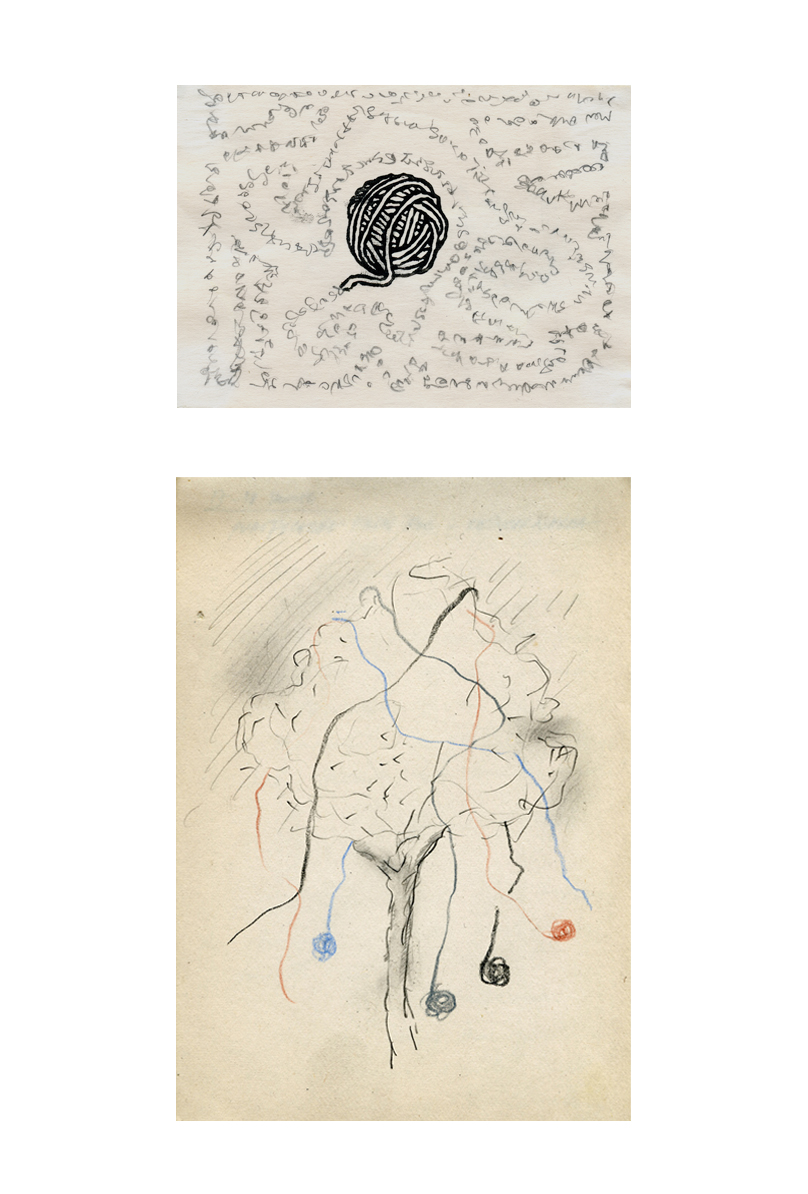
The clew is a recurrent pattern in Decebal Scriba's work. It takes on a strong symbolic and philosophical dimension, the rope referring to the idea of an initiatory journey, or even the course of existence. Composed of entanglements of yarn sometimes ordered, sometimes chaotic, it introduces a reflection on existential dilemmas.
This symbol is also used in drawings during state exhibitions and, under the guise of sobriety and innocence, allows the artist to escape the risk of censorship.
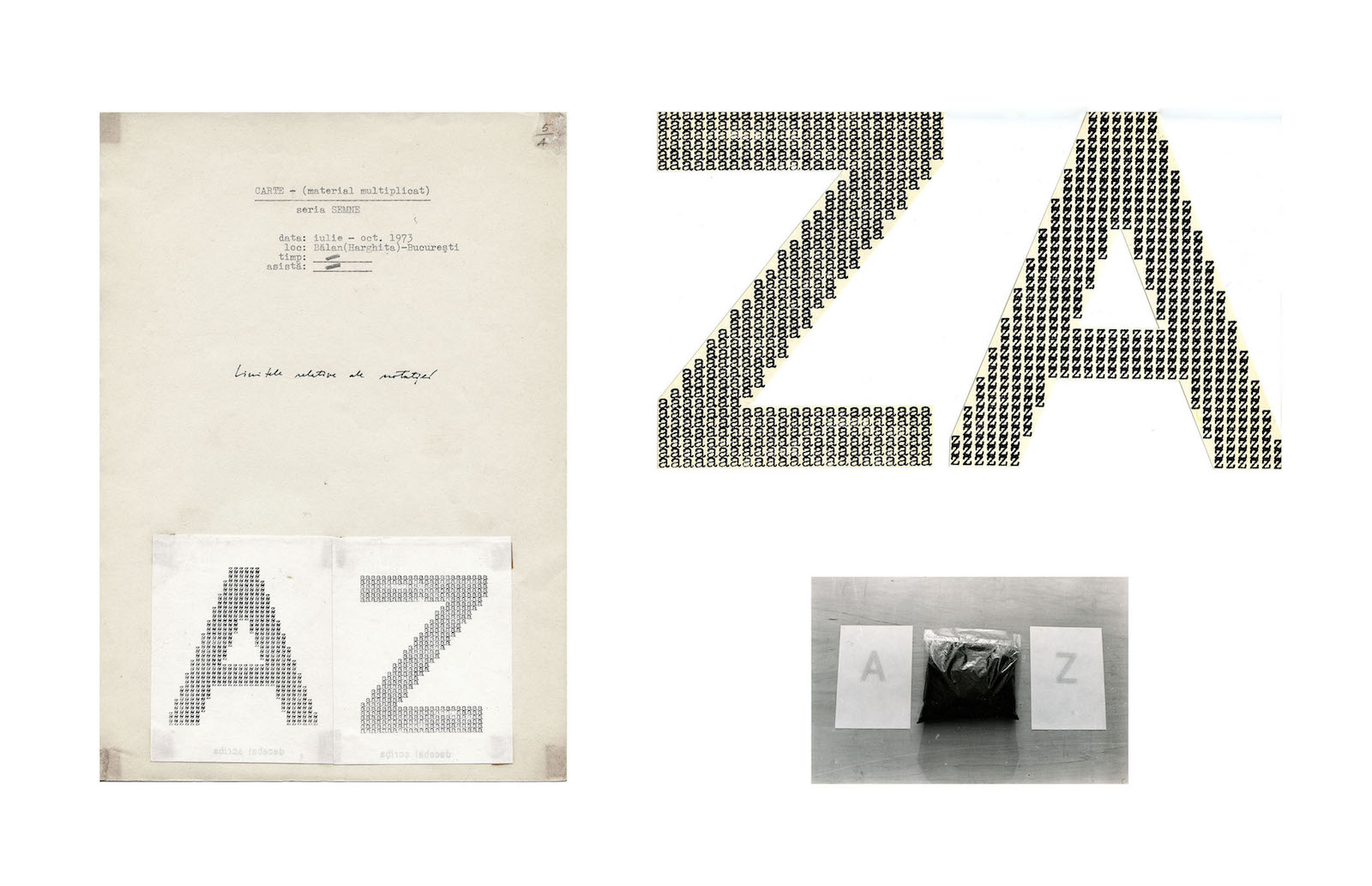
In the work Book (A-Z), each letter is made of its opposite letter, functioning as a revisited and enigmatic calligram, inviting to rethink language, its materiality and its limits. This work thus perpetuates a research around sign as well as around symbol, questionning the finitude of the human action and the creative process.

8,2 x 11,6 inch
Actions is echoing works around the conceptualism of the 60 - 70's, in which the artists exhibited "statements", in other words actions to be executed. By the integration of infinitive verbs, Decebal Scriba makes a reference to these "statements" and suggests, by the exploitation of the letter A only, the infinite character of the creative process constructed between utterances, combinations and inversions.
Exhibitions:
- Passages, Galerie Anne-Sarah Bénichou, Paris, France, 2019
- Separating systems, curated by Olivia Nitis, Calina, Espace d'Art contemporain, Timisoara, Romania, 2016
- In-side / Out-side, curated by Olivia Nitis, Calina, Victoria Art Center Gallery, Bucharest, Romania, 2015
- Situation et concept, Galerie Horizon/ Atelier 35, Bucharest, Romania, 1974
Bibliography:
- Decebal Scriba, 70s - 80s Works, under the supervision of Olivia Nitis, Verlag Kettler editions, 2017, p.81
- ARTA magazine, No. 20-21, text by Cristian Nae, 2016, p.3 and p.94
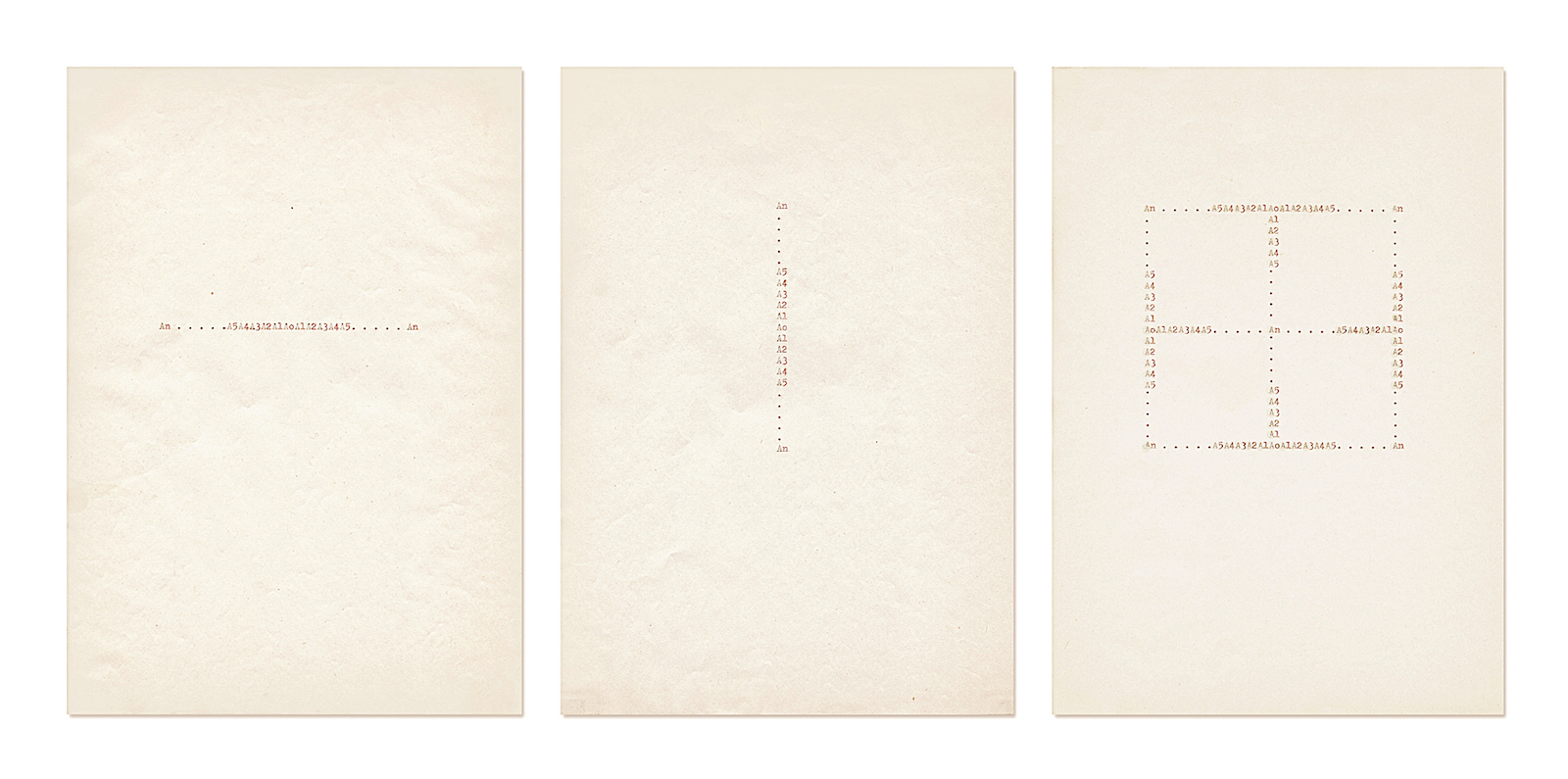
11,8 x 8,2 inch each
Vector sculptures is a series created from the result of reflections undertaken by the artist with a mathematician friend regarding mathematical philosophies. It is an attempt to link mathematical interpretations and plastic language by using vectors. These allow to virtually create volumes in space, in other words not to materialize the volume as such, but to suggest what it could have been.

30 x 21 cm (each)
Vector sculptures is a series created from the result of reflections undertaken by the artist with a mathematician friend regarding mathematical philosophies. It is an attempt to link mathematical interpretations and plastic language by using vectors. These allow to virtually create volumes in space, in other words not to materialize the volume as such, but to suggest what it could have been.
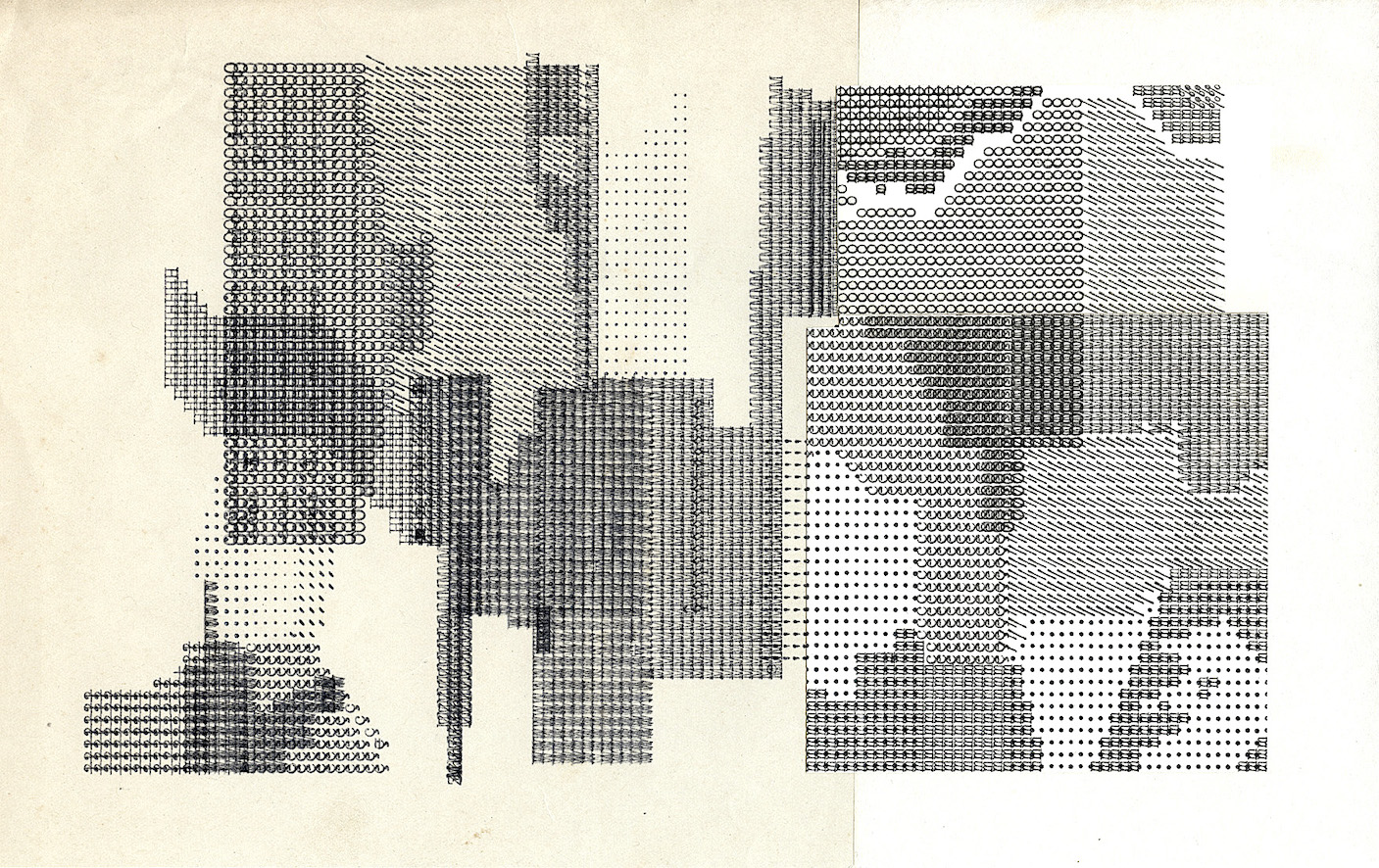
7,4 x 11,6 inch
Unconventional programmed paradigms 02 is an interdisciplinary work exploring philosophical and aesthetic issues. Through the influence of mathematics and self-generating grammar and by relying on concrete poetry, it questions the possibility of defining a fundamental unit for the aesthetic field: the aestheme. This neologism refers to the potentiality of finding a material which, like the atom constituting all things, would make it possible to conceive the entirety of other aesthetic forms.

Signed and dated lower right
The clew is a recurrent pattern in Decebal Scriba's work. It takes on a strong symbolic and philosophical dimension, the rope referring to the idea of an initiatory journey, or even the course of existence. Composed of entanglements of yarn sometimes ordered, sometimes chaotic, it introduces a reflection on existential dilemmas.
This symbol is also used in drawings during state exhibitions and, under the guise of sobriety and innocence, allows the artist to escape the risk of censorship.
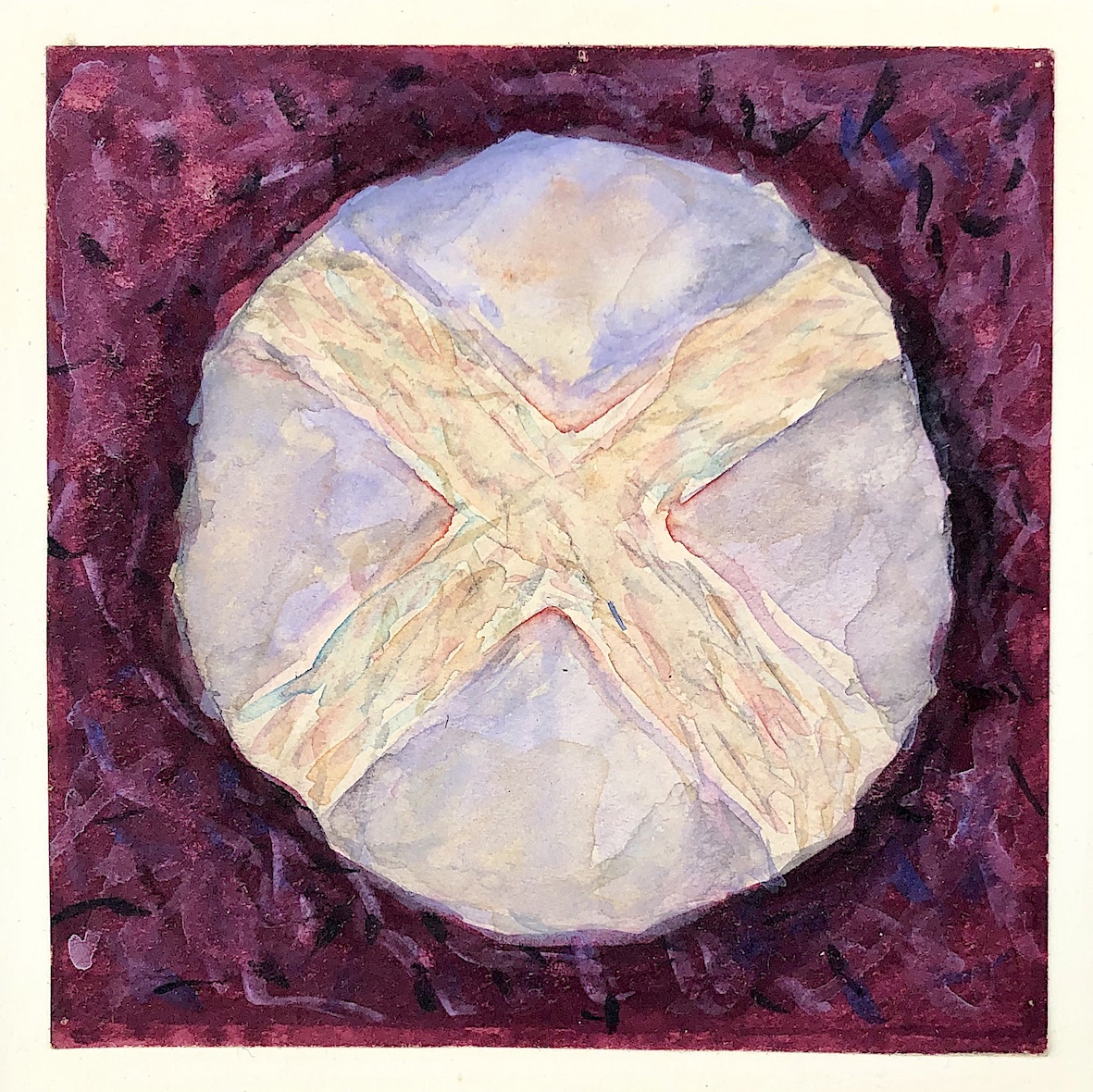
Signed and dated lower right
The clew is a recurrent pattern in Decebal Scriba's work. It takes on a strong symbolic and philosophical dimension, the rope referring to the idea of an initiatory journey, or even the course of existence. Composed of entanglements of yarn sometimes ordered, sometimes chaotic, it introduces a reflection on existential dilemmas.
This symbol is also used in drawings during state exhibitions and, under the guise of sobriety and innocence, allows the artist to escape the risk of censorship.

The clew is a recurrent pattern in Decebal Scriba's work. It takes on a strong symbolic and philosophical dimension, the rope referring to the idea of an initiatory journey, or even the course of existence. Composed of entanglements of yarn sometimes ordered, sometimes chaotic, it introduces a reflection on existential dilemmas.
This symbol is also used in drawings during state exhibitions and, under the guise of sobriety and innocence, allows the artist to escape the risk of censorship.


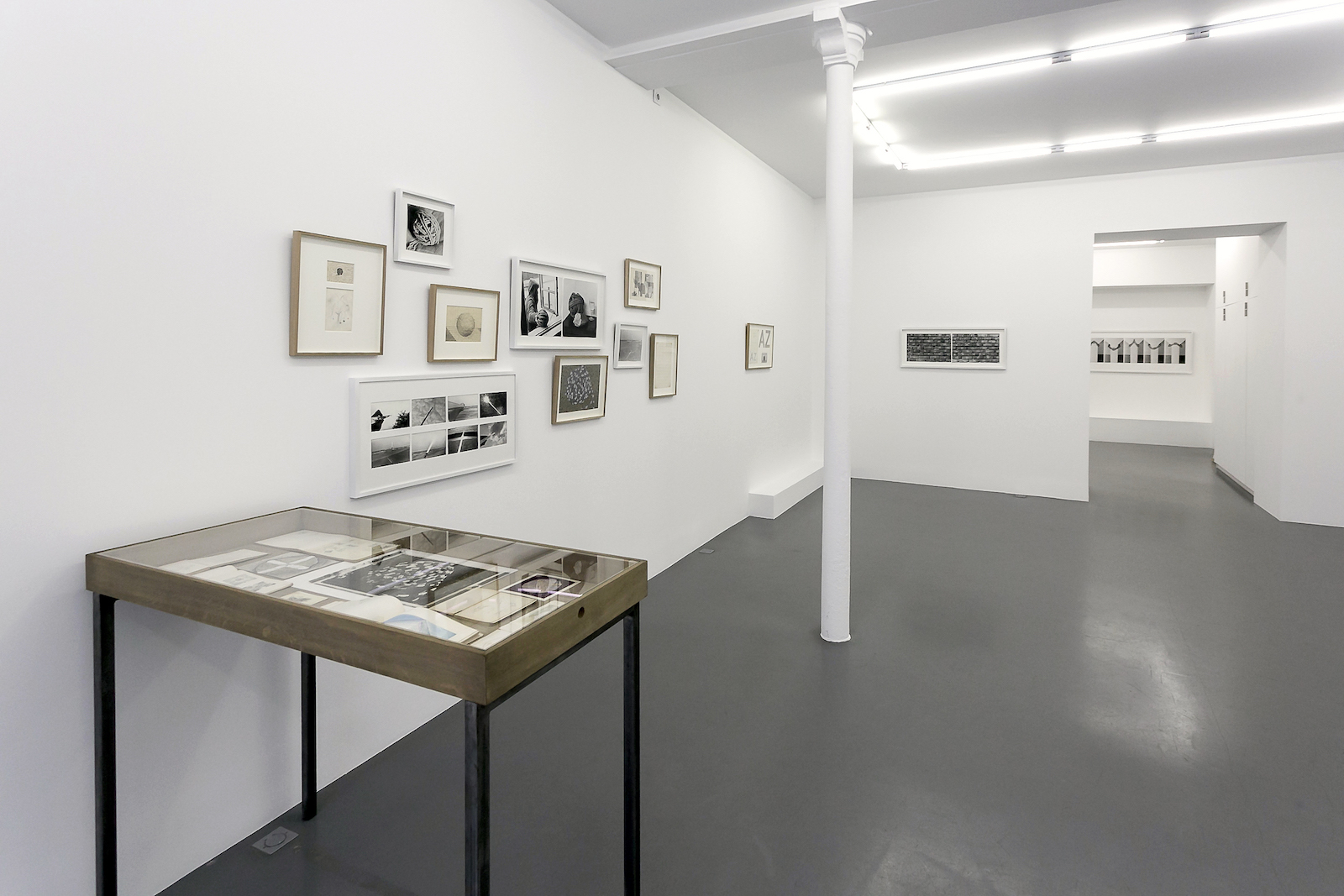
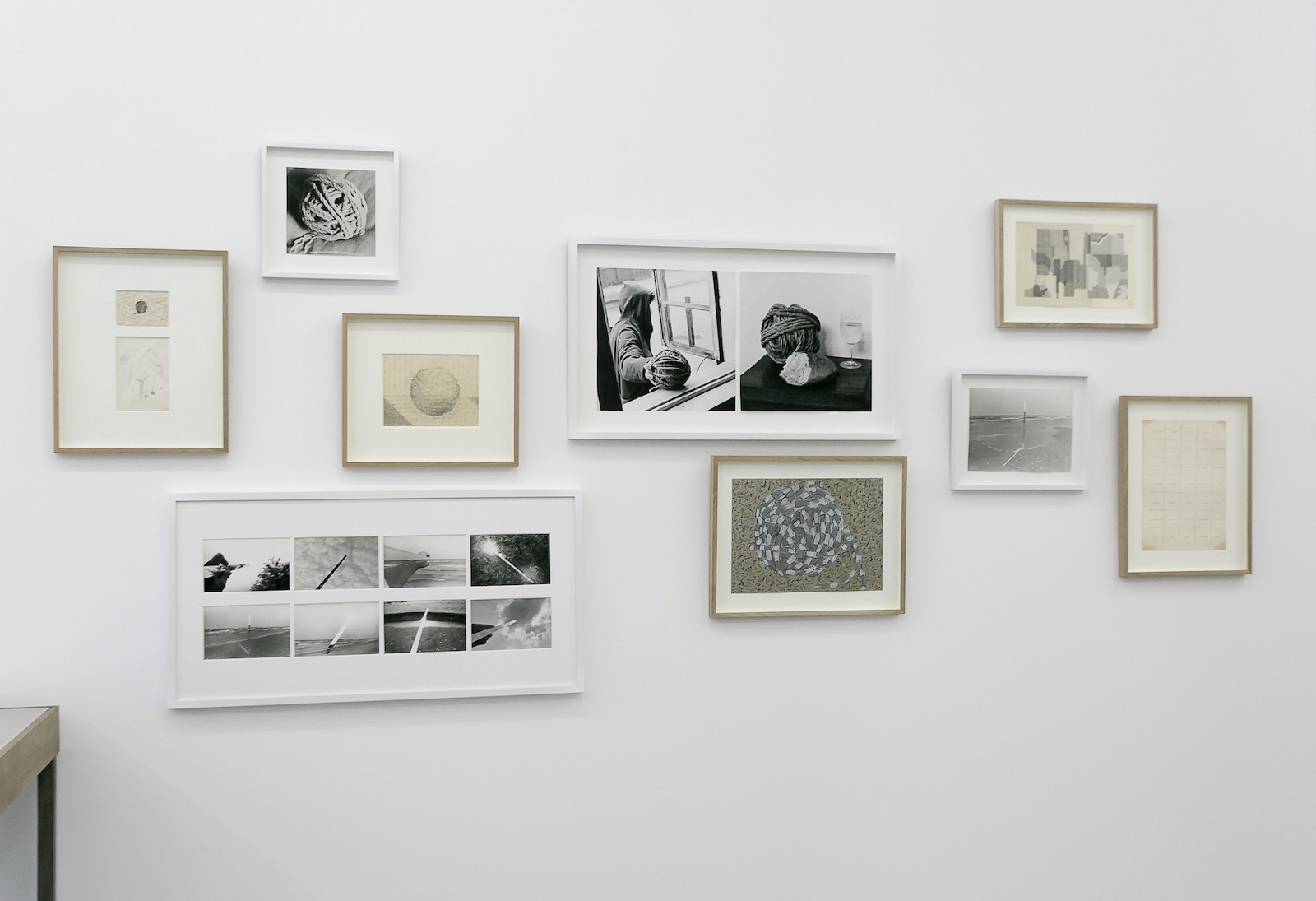
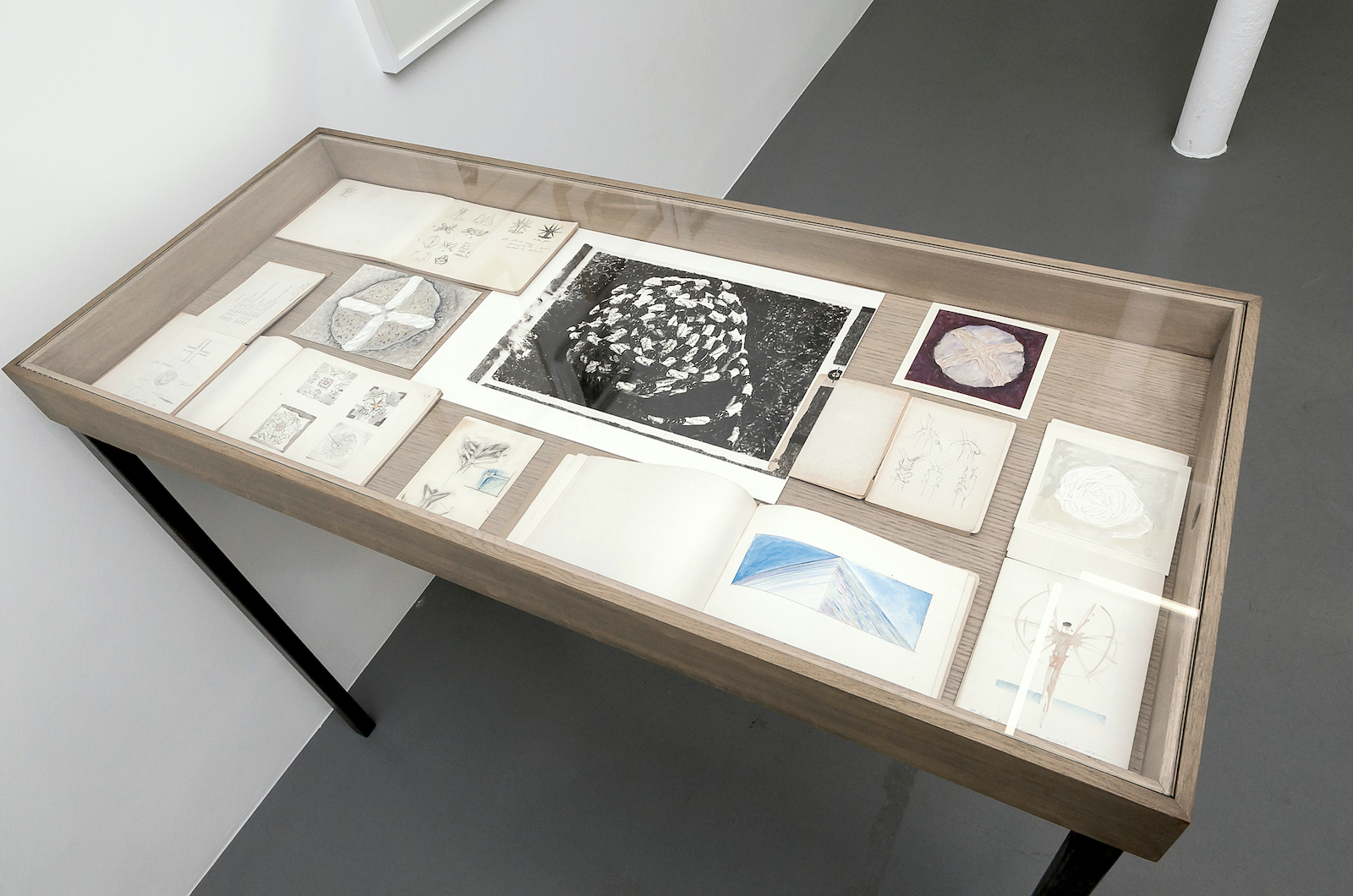

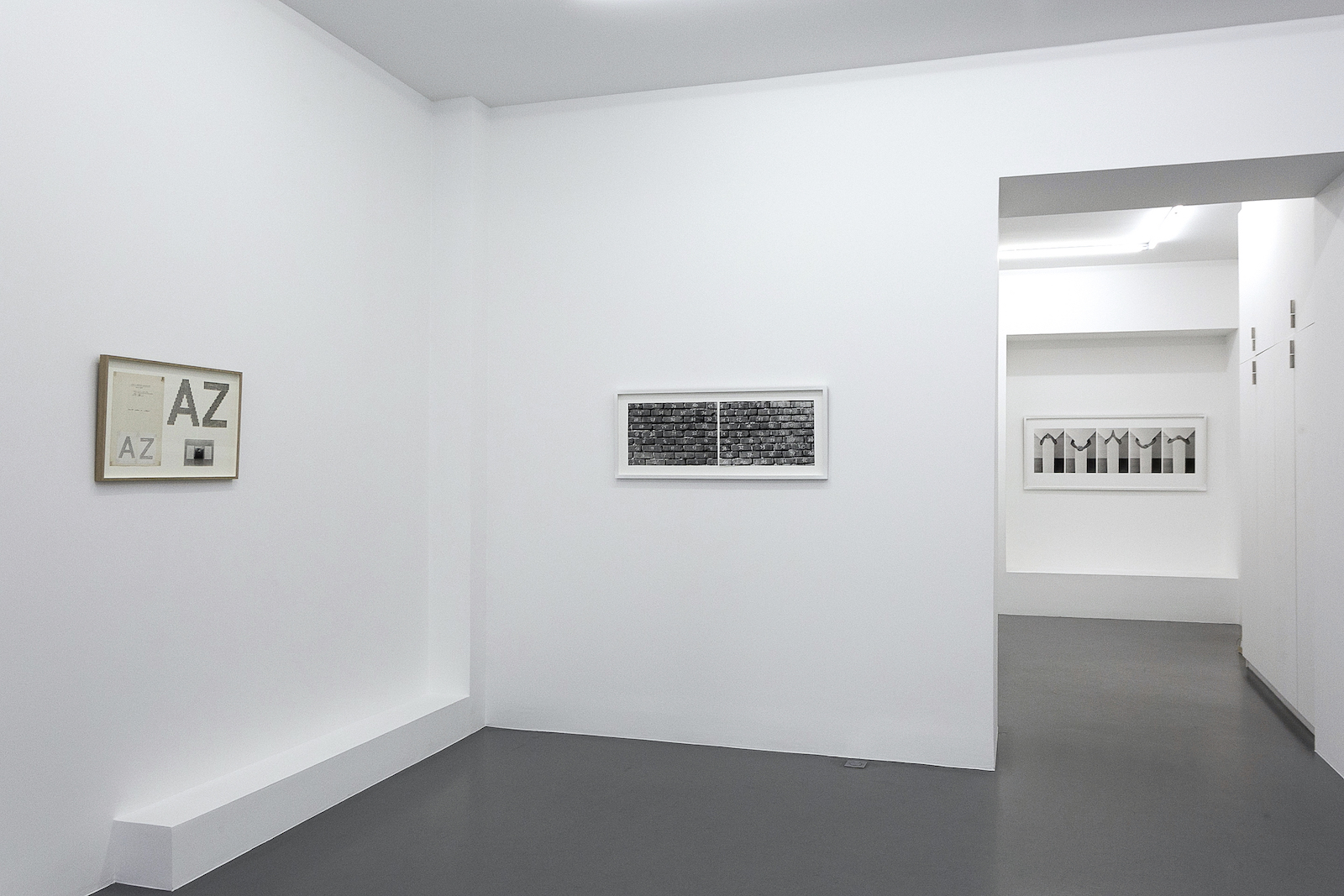
" Event organized as part of France - Romania 2019 season"
For his first solo show in France, Decebal Scriva presents a corpus of historical works tracing his permfomative, graphic and photogrpahic work in the 70's - 80's in Romania
To consult the catalogue of the exhibition please click here